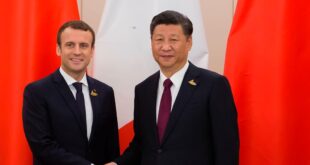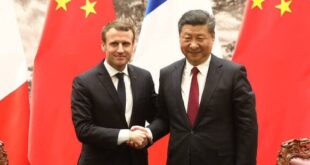Last year, I set out to investigate the on-the-ground impact of the tens of millions of euros the EU has spent trying to address the root causes of migration in Senegal.
The funding for these efforts came from the EU Trust Fund for Africa – a five-billion-euro pot of money launched in 2015. That year, over one million refugees, asylum seekers, and migrants crossed the Mediterranean Sea to Europe – the vast majority of them Syrians escaping their country’s metastasising civil war.
The basic idea of the EUTF was that by using development assistance to address poverty, poor governance, and insecurity – what the EU termed ‘the root causes of migration’ – the bloc could help reduce the number of people making the irregular journey to Europe.
In Senegal, the EU has spent nearly 164 million euros on these efforts since 2015. Fifty-five percent of that money has gone toward employment-related programmes, including efforts to reduce migration by creating job opportunities in Senegal’s agricultural sector. My aim was to explore the outcome of these projects.
I set out to visit farms that had received EU funding and to talk to local and international development actors, beneficiaries, and experts. But I quickly discovered that getting access and information was surprisingly difficult. At each step of the way, I encountered obfuscation, opacity, and at times, downright hostility. Why was it so difficult to report on projects that were ostensibly doing good?
Despite the barriers, I pushed forward, slowly uncovering a mixed and at times troubling picture of the on-the-ground impact of EUTF projects in Senegal. As a central part of the reporting, I managed to organise a trip to visit farms that had received EUTF funding in Senegal’s agricultural belt, known as the peanut basin – or so I thought.
The visit was coordinated by Senegal’s National Agency for Agricultural Insertion and Development (ANIDA), one of the EUTF’s implementing partners. I had been explicit about what I was reporting on and what I wanted to see. But at the end of my investigation, when I reached out to the EUTF for comment, I received the following reply:
“To clarify in the first place, the farm visited by the journalist was not financed via the [EUTF] project”.
I stared at my computer in disbelief as I felt the sinking feeling of months of reporting evaporating into thin air. But as I thought about it more, it dawned on me: The frustrating – and at times farcical – experience of trying to track the EUTF’s on-the-ground impact spoke volumes about the overall effectiveness of using development funding to tackle the root causes of migration: In the end, it was a fool’s mission.
Tackling migration through farming
My interest in the EUTF was sparked in June 2023 when I met a farmer, Ousmane Sambou, in the southern region of Senegal.
Sambou recounted the harrowing journey he took in 2016 through Mali, Niger, and Libya to attempt to reach Europe. After being beaten and robbed in Mali, imprisoned and extorted in Niger, and then robbed at gunpoint when he finally made it to the Libya-Niger border, he opted to turn around and go back to Senegal via a voluntary repatriation programme run by the UN’s migration agency, IOM.
Back home, depressed and lost, he got connected with a farming training programme through a EUTF project. He called it “life-changing” and vowed to never migrate again.
His story struck me. Was it really possible to tackle the drivers of migration through farming? I wanted to find out if the approach was scalable and financially viable for the EU, and whether it met the needs of the local communities it aimed to serve.
Back in Senegal’s capital, Dakar, I chose two EUTF projects focusing on agriculture to look into. One was managed by ANIDA in partnership with the Italian and Spanish Development Cooperation Agencies and had received 20 million euros from the EUTF. The other was run by the Belgian Development Agency, Enabel, and had a budget of 18 million euros from the EUTF.
I thought getting in touch with Enabel would be an easy place to start, but my attempts were met with silence. When I turned up unannounced at the agency’s office in Dakar, the project lead declined to be interviewed. The EUTF, it turned out, was politically sensitive.
Stonewalled by Enabel, I tried my luck with ANIDA, which proved more receptive. Babacar Ndiaye – ANIDA’s director of studies, facilities, and infrastructure – promised to show me around some of the 114 farms he said the agency had built with the 20 million euros from the EUTF to stimulate youth employment and – by extension – provide an alternative to migration.
The approach of trying to tackle migration through agricultural development wasn’t entirely new, Ndiaye explained. ANIDA was created in 2006 as part of an early iteration of these efforts funded by Spain – a common destination for Senegalese migrants.
“ANIDA was created in the context of stopping illegal migration to Spain,” said Ndiaye. “With 10 million euros from the Spanish, ANIDA was born.”
When the EUTF entered the picture almost a decade later, it poured more money in and doubled down on the same approach.
 موقع وجه أفريقيا موقع وجه أفريقيا هو موقع مهتم بمتابعة التطورات في القارة الأفريقية
موقع وجه أفريقيا موقع وجه أفريقيا هو موقع مهتم بمتابعة التطورات في القارة الأفريقية



